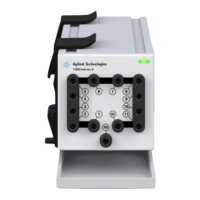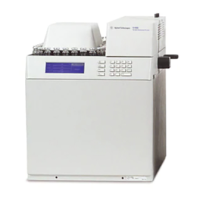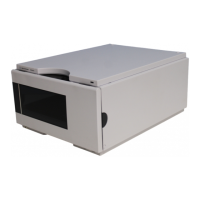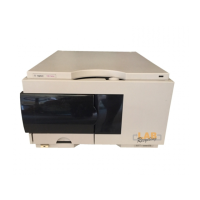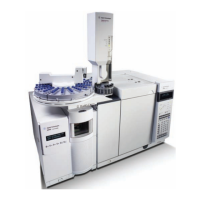Agilent InfinityLab LC Series Vialsamplers User Manual 145
4 Preparing the Module
Solvent Information
Polyimide
Agilent uses semi-crystalline polyimide for rotor seals in valves and needle seats
in autosamplers. One supplier of polyimide is DuPont, which brands polyimide as
Vespel, which is also used by Agilent.
Polyimide is stable in a pH range between 1 and 10 and in most organic solvents.
It is incompatible with concentrated mineral acids (e.g. sulphuric acid), glacial
acetic acid, DMSO and THF. It is also degraded by nucleophilic substances like
ammonia (e.g. ammonium salts in basic conditions) or acetates.
Polyethylene (PE)
Agilent uses UHMW (ultra-high molecular weight)-PE/PTFE blends for yellow
piston and wash seals, which are used in 1290 Infinity pumps, 1290 Infinity II
pumps, the G7104C and for normal phase applications in 1260 Infinity pumps.
Polyethylene has a good stability for most common inorganic solvents including
acids and bases in a pH range of 1 to 12.5. It is compatible with many organic
solvents used in chromatographic systems like methanol, acetonitrile and
isopropanol. It has limited stability with aliphatic, aromatic and halogenated
hydrocarbons, THF, phenol and derivatives, concentrated acids and bases. For
normal phase applications, the maximum pressure should be limited to 200
bar.
Tantalum (Ta)
Tantalum is inert to most common HPLC solvents and almost all acids except
fluoric acid and acids with free sulfur trioxide. It can be corroded by strong bases
(e.g. hydroxide solutions > 10
%, diethylamine). It is not recommended for the use
with fluoric acid and fluorides.
Stainless Steel (SST)
Stainless steel is inert against many common solvents. It is stable in the
presence of acids and bases in a pH range of 1 to 12.5. It can be corroded by
acids below pH 2.3. It can also corrode in following solvents:
• Solutions of alkali halides, their respective acids (for example, lithium iodide,
potassium chloride, and so on) and aqueous solutions of halogens.
• High concentrations of inorganic acids like nitric acid, sulfuric acid and
organic solvents especially at higher temperatures (replace, if your
chromatography method allows, by phosphoric acid or phosphate buffer
which are less corrosive against stainless steel).

